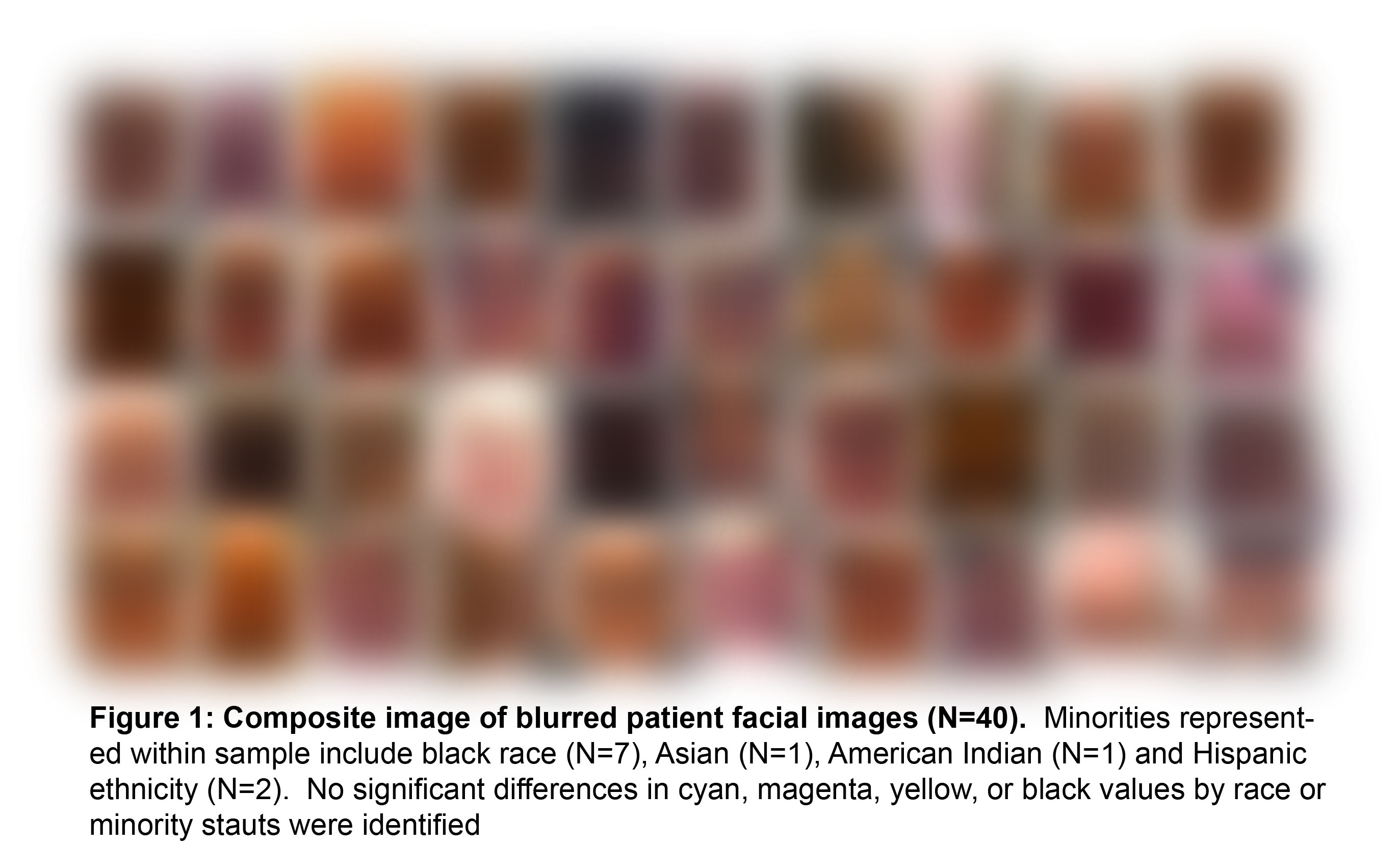Quantifying Patient Skin Tone for Evaluation of Race and Ethnicity-based Disparities and Assessment of Implicit Bias
Chloe A Powell1, Shukri Dualeh1, Gloria Y Kim1, Vanessa Niba1, Dante Zanders1, Matthew P Goldman2, Matthew A Corriere1
1University of Michigan Health System, Ann Arbor, MI;2Atrium Health Wake Forest Baptist, Winston Salem, NE
INTRODUCTION: Vascular surgery outcomes disparities based on race, ethnicity, and gender are well-described, but underlying mechanisms are poorly understood. Race and ethnicity are typically categorized based on patient self-report using a limited number of categories that may or may not be consistent with patient appearance. We developed a novel method to quantify patient skin color based on photographs and explored associations with race and ethnicity.
METHODS: Participants were prospectively recruited from vascular surgery clinics, and informed consent was obtained from all participants. Color patient facial photographs were de-identified using Guassian blurring. Face color was then sampled in 4 locations (forehead, nose, left cheek, right cheek) and quantified based on cyan, magenta, yellow, and key (black) (CYMK) intensity as used for color print documents. Mean CMYK components and summed CMYK component means were then compared based on race, ethnicity, and categorical minority status using confidence intervals and non-parametric tests.
RESULTS: 40 participants (10 minority) were recruited and evaluated. Minority representation included black (N=7), American Indian (N-1), Asian (N=1), and Hispanic ethnicity (N=2). No significant differences in CYMK sum were identified based minority status (P=0.69), and mean scores stratified by race were similar (CMYK sum (95% CI) 167 (148-186) for white versus 165 (122-209) for minority, P>0.05. De-identified images were not readily identifiable by race or ethnicity (Figure).
CONCLUSIONS: Although implicit biases may exist based on race and ethnicity, skin tones between white and minority patients were surprisingly similar. Outcomes disparities may not be correlate with skin color, and categorical race identity and/or other aspects of physical appearance may be more relevant to implicit bias. 
Back to 2023 Display Posters


